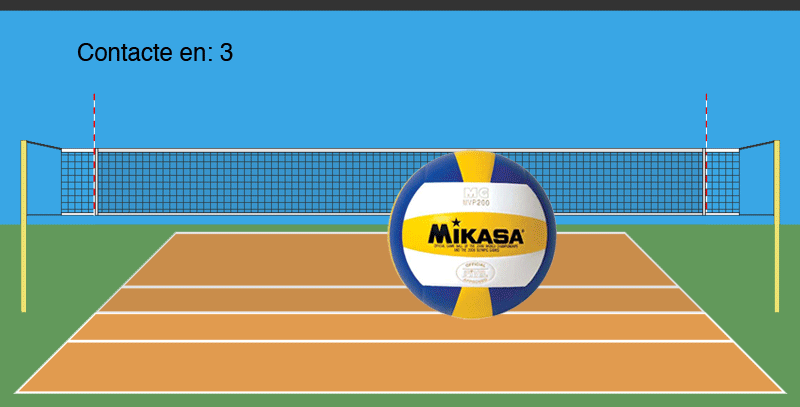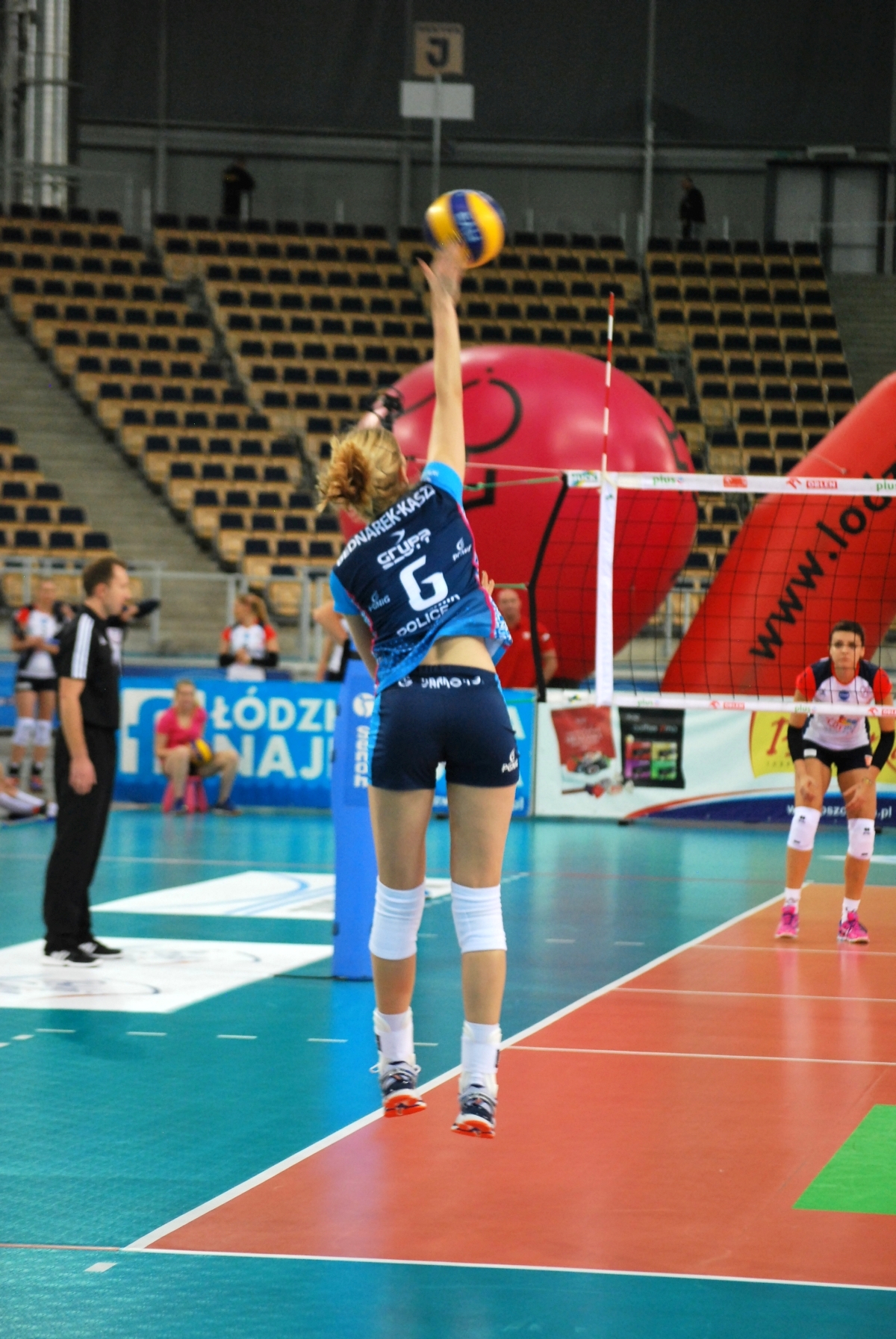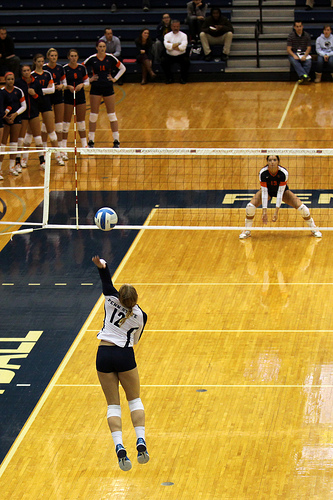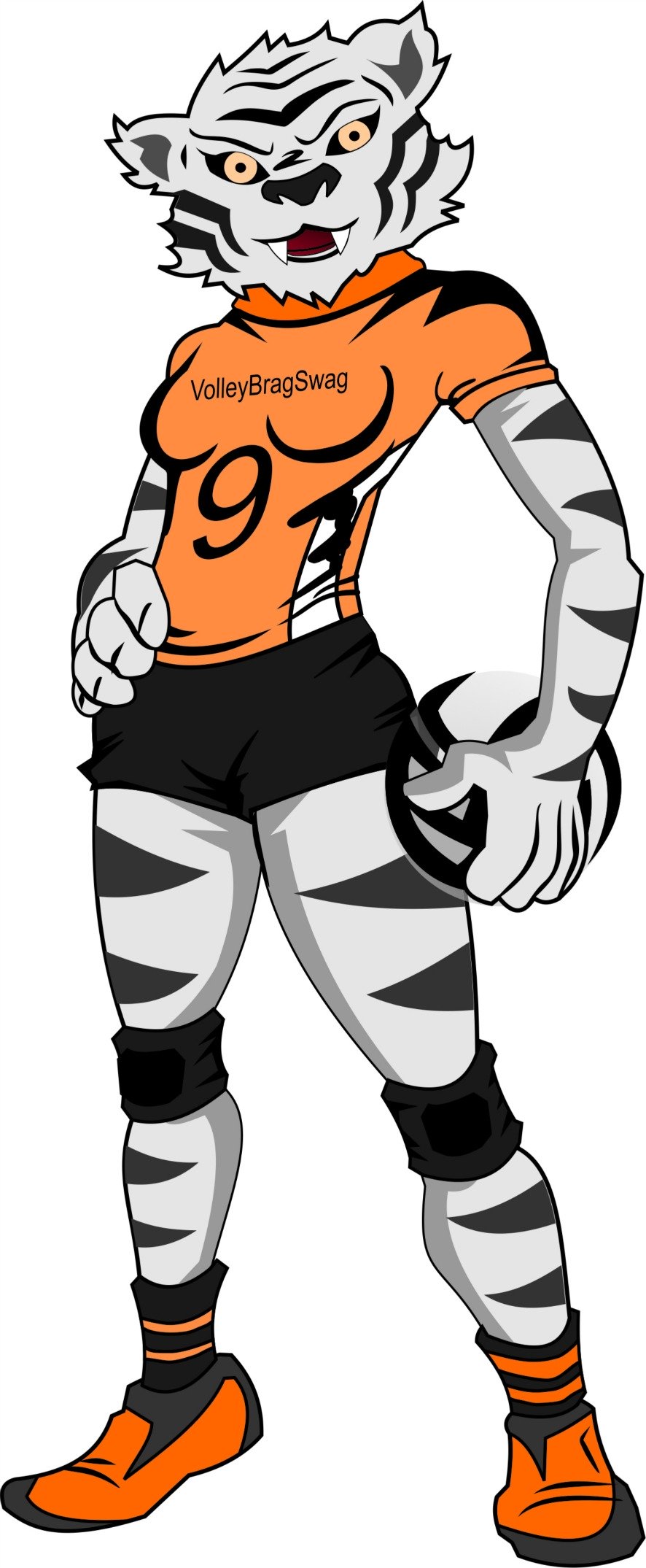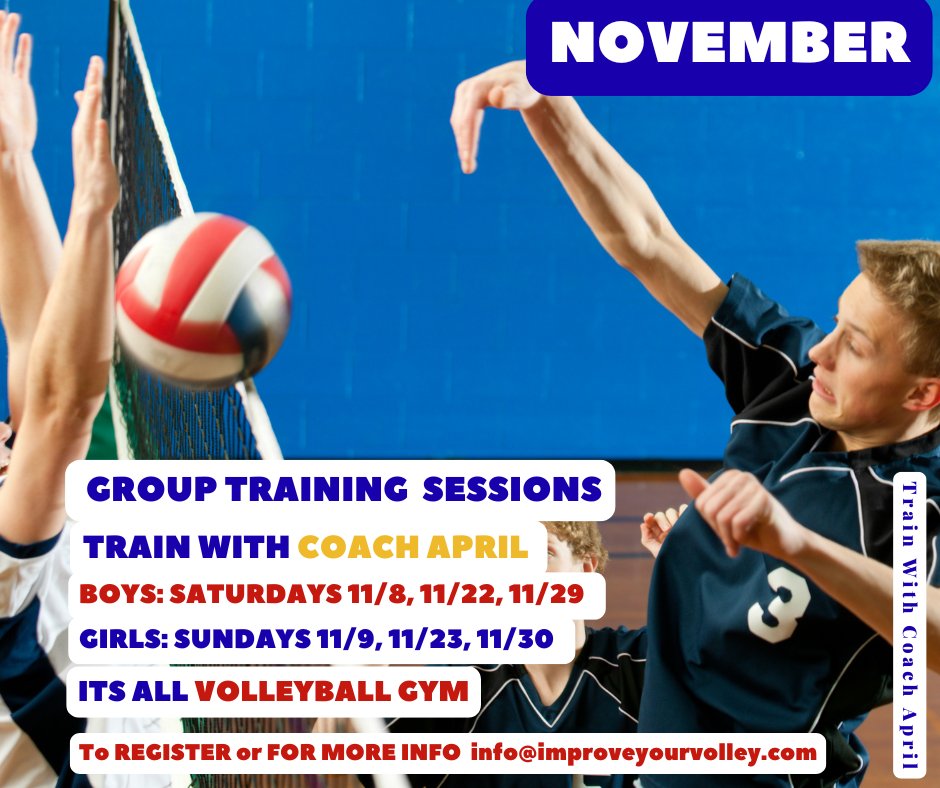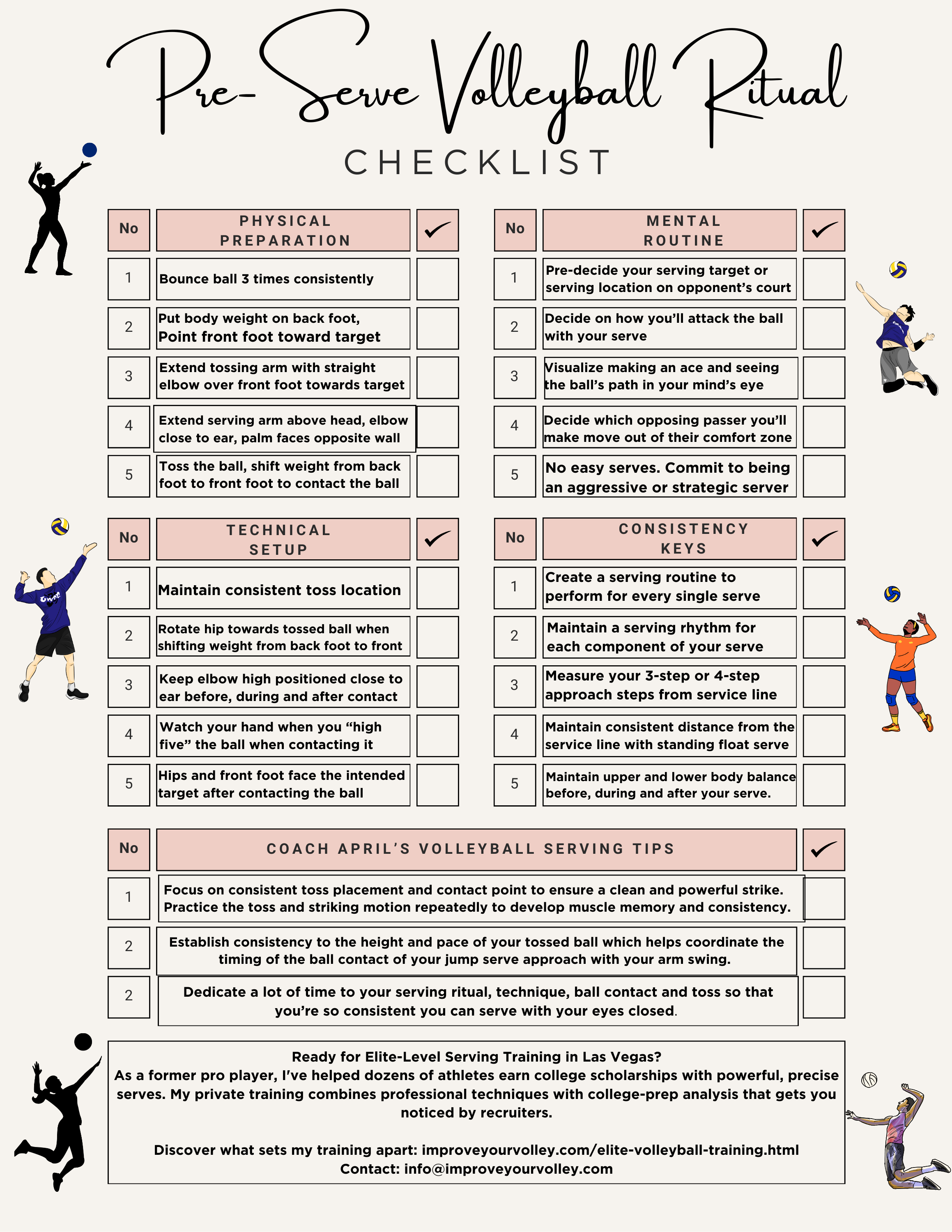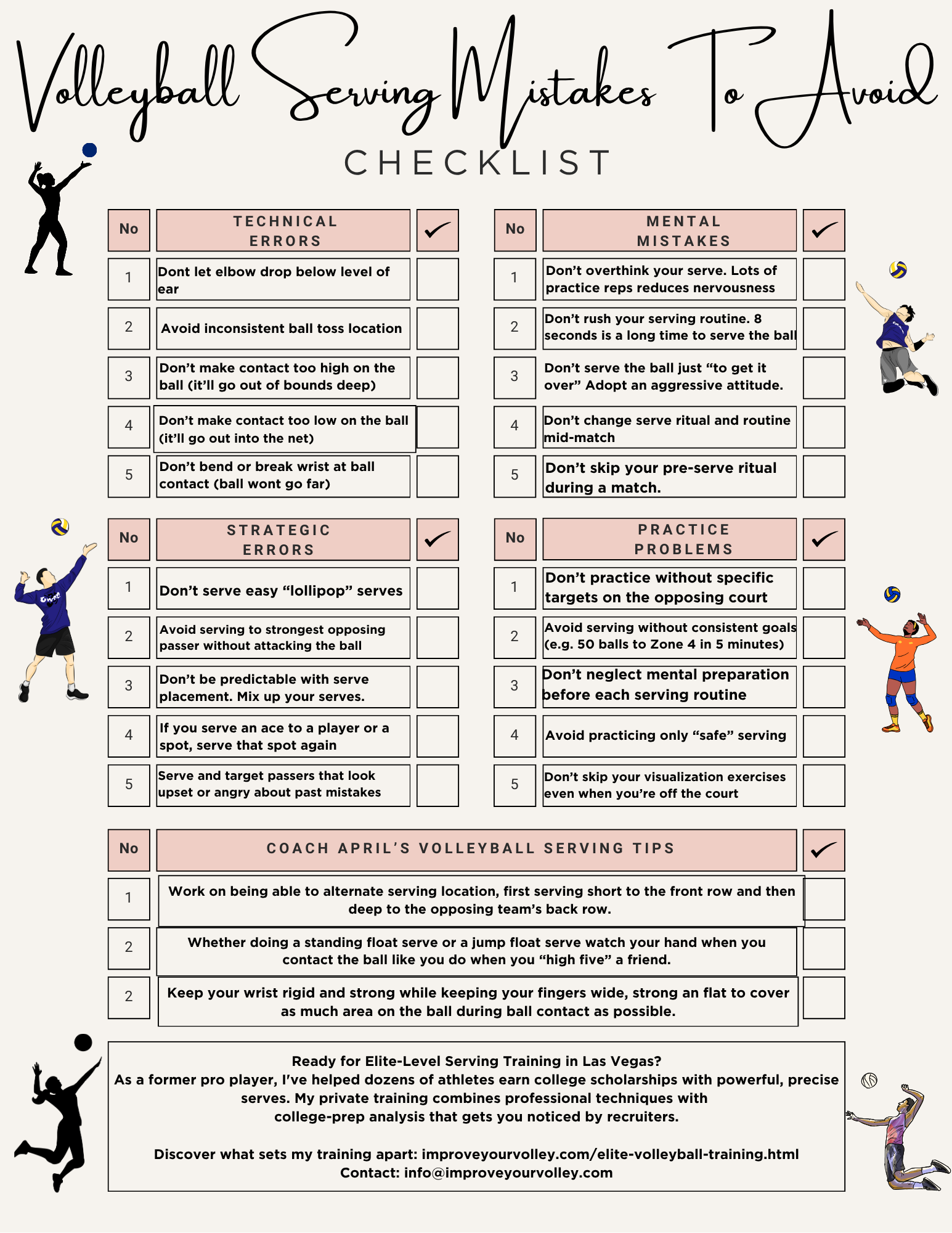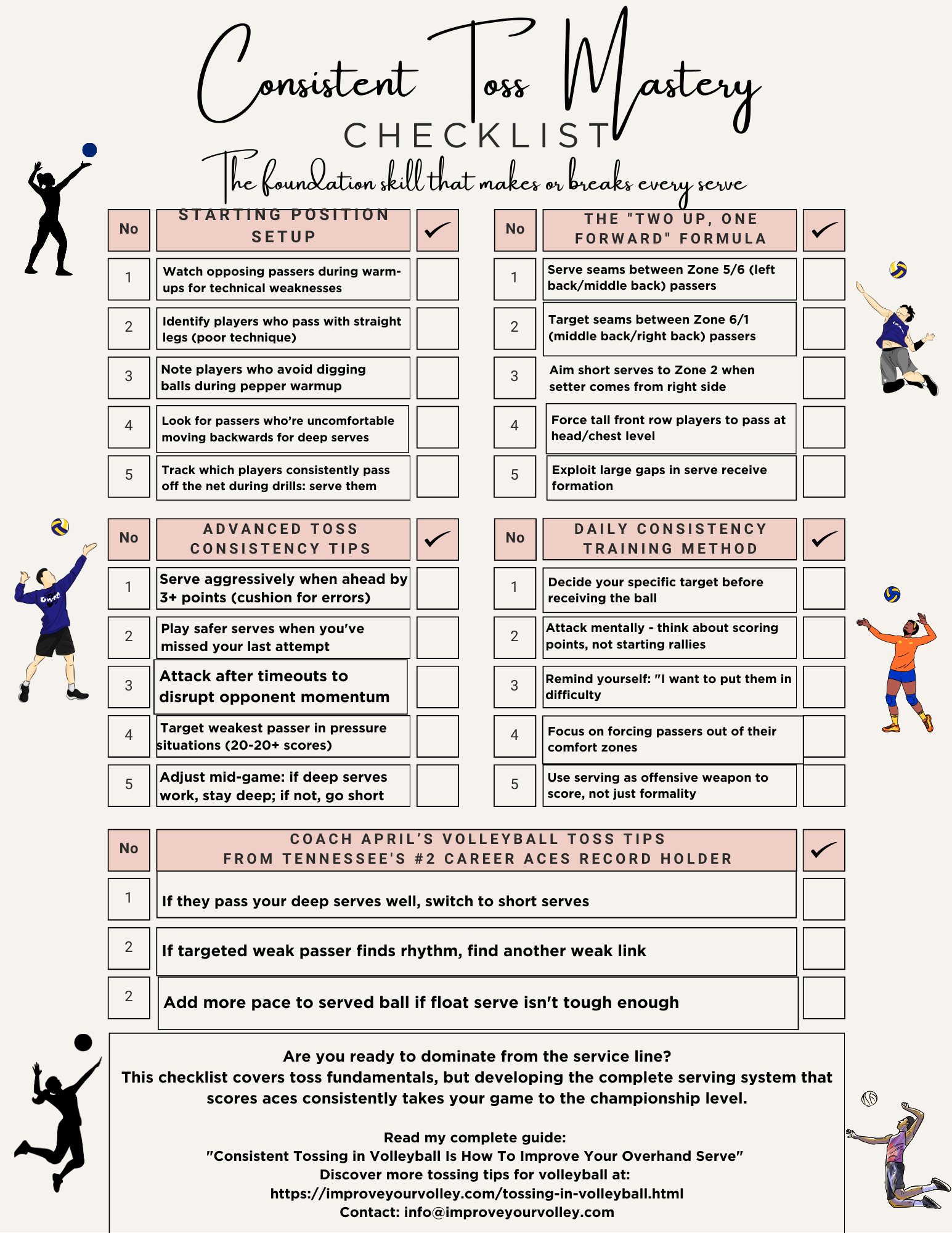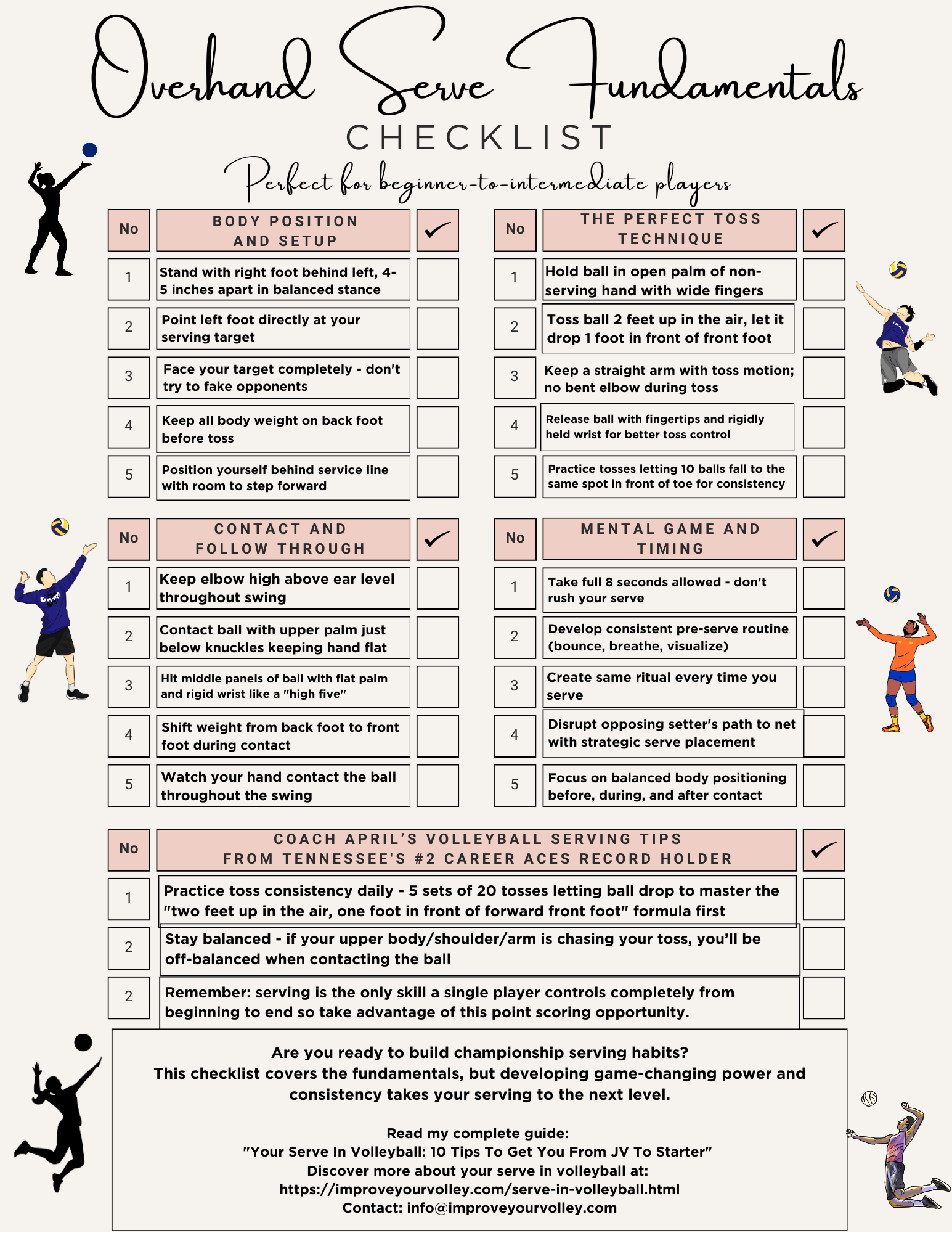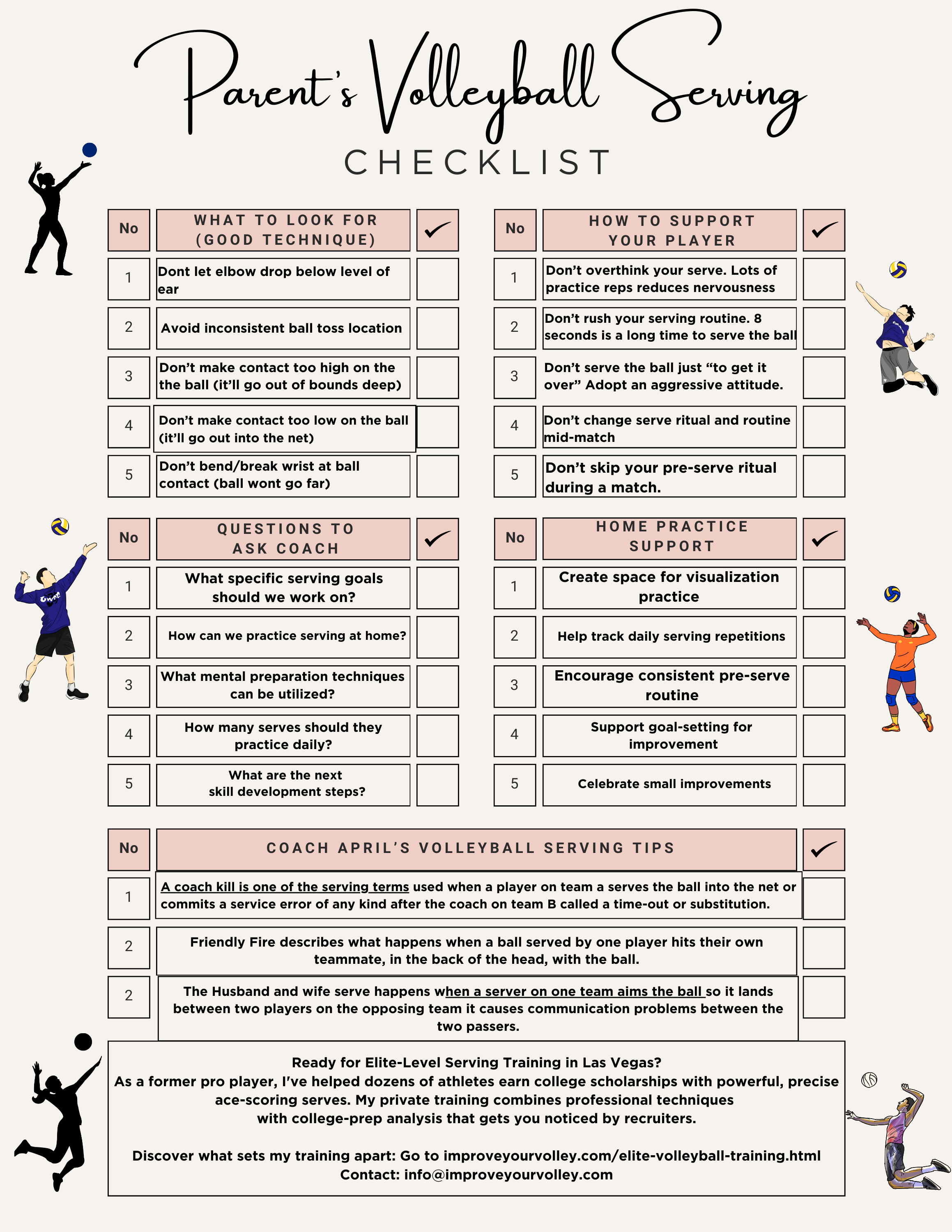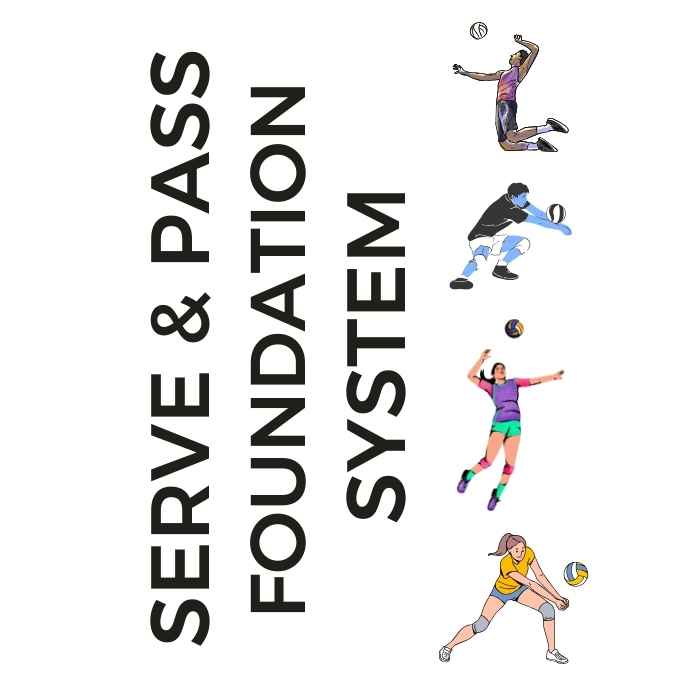
Serve + Pass Foundation System: The Complete Skills Arsenal The two-skill mastery system that transforms inconsistent players into the athletes coaches build their lineups around. Stop Struggling With The Two Most Important Skills In Volleyball!
- Improve Your Volleyball with Coach April
- Basic Volleyball Skills for Beginners
- The Jump Float Serve
Use A Jump Float Serve To Generate Power For An Ace Or To Start A Rally
Use the overhand jump float serve to generate a powerful serve that starts a rally after the ref blows the whistle for the player behind the service line.
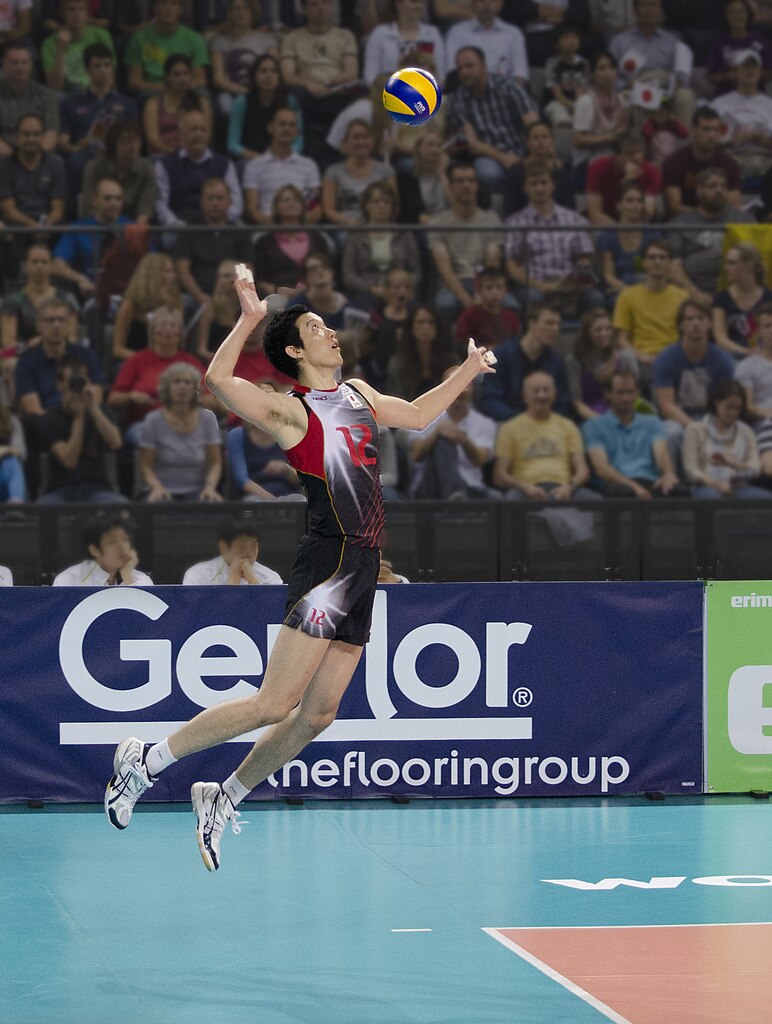 Use the overhand jump float serve to generate a powerful serve that starts a rally after the ref blows the whistle for the player behind the service line.
jump float servephotobypjt56
Use the overhand jump float serve to generate a powerful serve that starts a rally after the ref blows the whistle for the player behind the service line.
jump float servephotobypjt56Volleyball Serves - The Jump Float Serve
Want to support your daughter's development at home? My complete training system gives parents the tools to help between practices.
This serve involves a three or four step approach and a jump to launch the server in the air to generate extra power and velocity behind the ball.
To execute a jump float serve effectively, start by standing behind the service line and take a few steps back for your approach.
step - toss - step close - launch yourself in the air
As you reach the peak of your approach, jump off both feet, extending your hitting arm back and swinging it forward forcefully.
Make contact with the ball at the highest point of your jump, ideally with a firm hand and a snapping motion of the wrist.
The Primary Advantage of the Jump Float Serve
The primary advantage of the jump float serve is the added power and velocity it can generate so once the ball passes over the net it spins to the ground quickly.
With a well-executed jump float serve, you can put significant pressure on the opposing team's serve reception, making it difficult for them to control the ball and initiate a strong offensive play.
Setting up your own practice space?
This volleyball court equipment should make it easy to practice anywhere.
Addi works on her jump float serve toss consistency while aiming for a deep line serve to Zone 5.
To maximize the effectiveness of your jump float serve, consider the following tips:
1. Timing Your Jump Float Serve
Volleyball Serving Drills: Addi, Piper and Hadley working on their jump float serve to chairs for Accuracy and Points during semiprivate training with me
Focus on timing your approach jump to ensure you contact the ball at the highest point of your jump.
Practice the timing and coordination of your steps, arm swing, and jump reach to achieve a seamless motion with no pauses or hesitations in your approach to the ball.
2. Generating Height With your Jump Float Serve
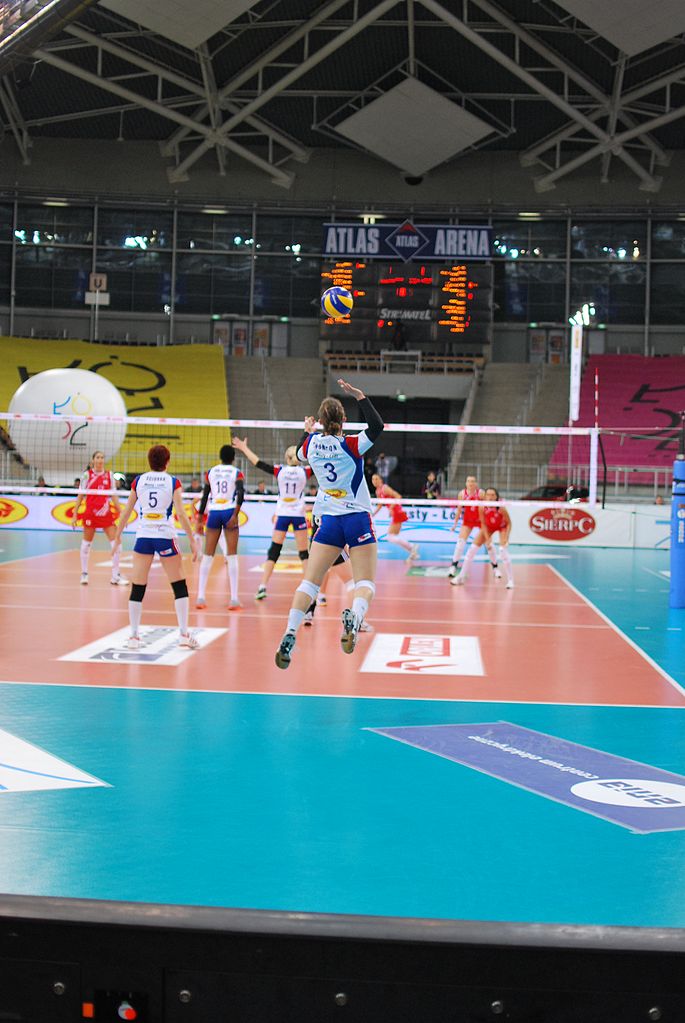
Practice the timing and coordination of your steps, arm swing, and jump reach to achieve a seamless motion with no pauses or hesitations in your approach to the ball before your jump float serve.
Give your tween the edge with my beginner skills checklist bundle - the same system I use with my 12-14 year old players
Work on developing explosive leg power to achieve the maximum height in your jump.
I like to tell my clients to attack the floor with the last two steps of your approach in order to launch yourself higher in the air using your leg muscles to drive upward forcefully to gain additional height during the serve.
In my semi-private and private training sessions I have my clients treat the floor like a mini trampoline when they take their last two steps that launch them in the air.
3. Generating Velocity During Your Jump Float Serve
My College Breakfast Club training group working on jump float serve skills specifically hand to ball and toss consistency.
To generate velocity, focus on a strong back swing with both arms and quickly and aggressively swing both arms forward before pulling the elbow of the serving arm back keeping the elbow close to your ear and turning the palm of the hand towards the ball before you make contact with the ball.
Use the full range of motion in your hitting shoulder while reaching high and keeping your elbow above the level of your ear and keeping a rigid wrist as the middle of your hand makes quick contact with the ball.
4. Practice and Consistency
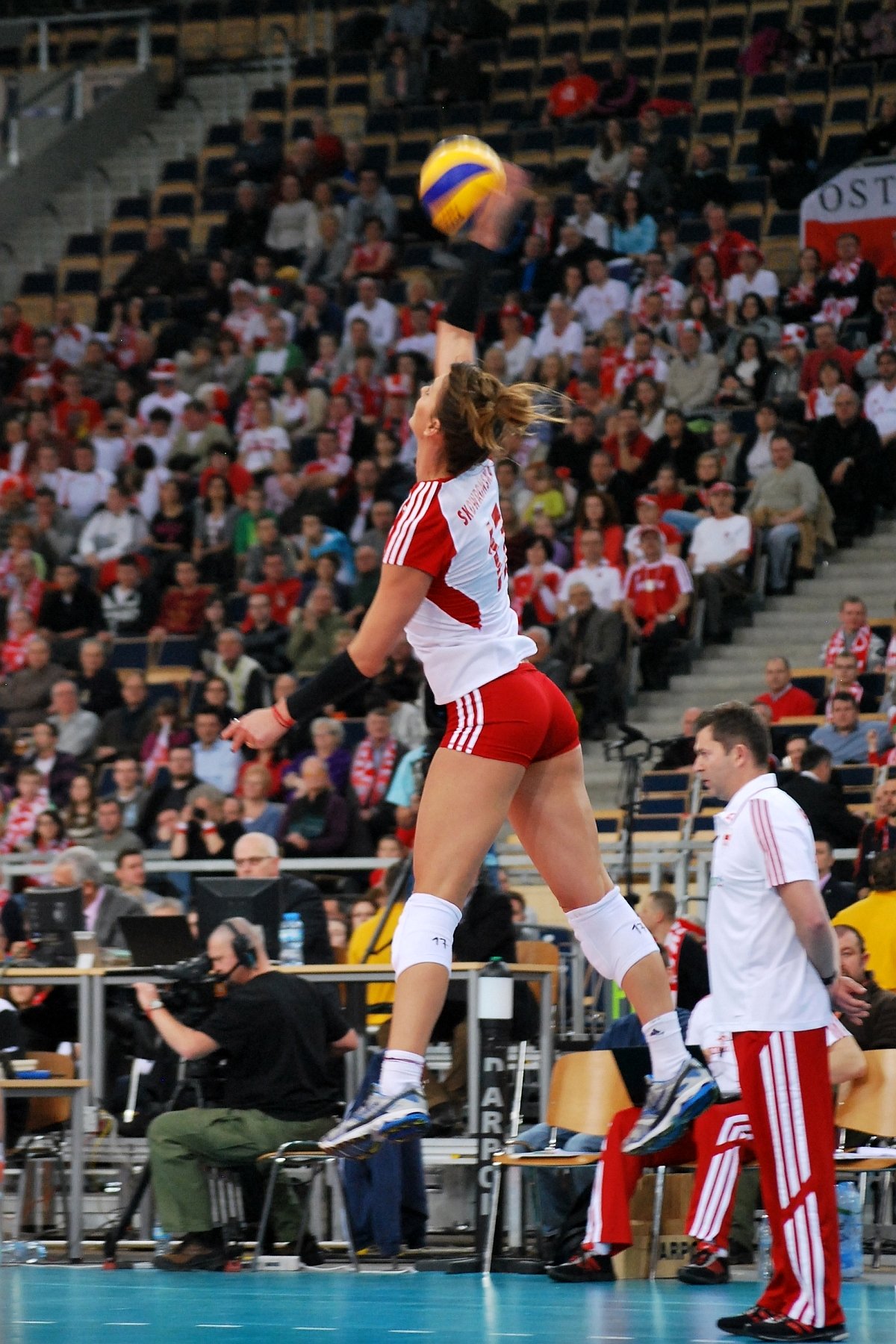
FIVB World Championship European Qualification Women Łódź January 2014. Katarzyna Skowrońska-Dolata - volleyball player from Poland
Like any skill, the jump float serve requires practice and consistency to refine your technique and develop accuracy and control.
Set aside practice sessions to work on your jump serve and strive for repetition and refining your technique.
By mastering the mechanics of the jump float serve and incorporating it into your game strategy, you can become a formidable server and disrupt the opposing team's serve reception, giving your team a significant advantage.
Jump Float Serve Techniques
Mastering the proper technique is essential for a consistent and accurate serve.
Regardless of the type of serve you choose, the following elements are crucial.
Volleyball Serve - Jump Float Serve Grip
Hold the ball firmly in the palm of your hand and use your widely spaced fingers to secure it in place as you do your sere approach steps.
Maintaining a steady grip on the ball throughout your serve step approach ensures that the ball doesn't slip from your hand before your toss.
This grip helps maximize your ability to toss the ball consistently at the same height and the same pace before each serve.
Frequently Asked Questions About The Jump Float Serve
Question: 1. What is a jump float serve in volleyball?
Question: 1. What is a jump float serve in volleyball?
Answer: A jump float serve is a powerful and challenging serve that's executed by hitting the ball at the peak of your jump after you take an approach before launching yourself in the air after tossing the ball, causing it to move in an unpredictable manner. This technique involves a two-three or four-step approach, a jump, and an overhead swing to deliver a powerful serve.
Question: 2. How much power should I put into my jump float serve?
Question: 2. How much power should I put into my jump float serve?
Answer: The power of a jump float serve depends
- upon the correct form and speed of your hand to the ball during your arm swing
- an aggressive approach
- a consistent toss.
It's not about sheer force; power in the serve is a result of proper arm swing technique, hand contact and location on the ball and timing while in the air.
Question: 3. Do I always need to put a lot of power in my serve?
Question: 3. Do I always need to put a lot of power in my serve?
Answer: Not necessarily. While a powerful serve can be challenging for the opposition to return, the goal of a jump float serve is a well placed, "hard to pass" serve that makes it difficult for the opposing team to run an easy offensive play for a point.
- A tough well placed well paced deep serve or
- a serve that lands short in Zone 2, 3 or 4 in the opposing team's court with an unpredictable 'float' of the ball
will make the first contact of the ball hard to control making it harder for the receiving team's setter to get the ball to one of their three or four eligible attackers in order for them to spike the ball back into your court with ease.
Question: 4. How can I improve the consistency of my toss in the jump float serve?
Question: 4. How can I improve the consistency of my toss in the jump float serve?
Answer: Improving the consistency of your toss comes with practice. Aim to toss the ball just slightly above your maximum reach to ensure it's going straight up and down without spinning and is located in front of your serving arm as you go up in the air during your serving approach.
Question: 5. What are the key differences between the jump float serve and other serves in volleyball?
Question: 5. What are the key differences between the jump float serve and other serves in volleyball?
Answer: The jump float serve is unique because of its lack of spin on the ball. Unlike the top-spin serve, the ball is hit with a flat hand contact in the middle panels, causing an unpredictable trajectory, making it hard for the opposing team's passers to position themselves in a way that they can easily receive the serve and pass it to their setter.
Question: 6. How can I ensure I'm landing correctly after my jump float serve?
Question: 6. How can I ensure I'm landing correctly after my jump float serve?
Answer: To land correctly during a jump float serve, aim to land on both feet with your knees slightly bent to absorb the shock. Landing properly is crucial to prevent any potential injuries.
In other words ad I tell me clients who have or have had knee issues,.."go up on two and land on two legs.
Question: 7. Why should I choose the jump float serve over other serve techniques?
Question: 7. Why should I choose the jump float serve over other serve techniques?
Answer: The jump float serve adds both speed and unpredictability to your serve, making it harder for the opposing team's players to pass the ball and run an offensive play.
With consistent practice focusing on jump timing, hand-to-ball contact, and high reach during your toss, it's highly adaptable, allowing you to increase your chances of scoring an ace because of its difficulty.
Question: 8. Can I incorporate my own rhythm or style into the jump float serve?
Question: 8. Can I incorporate my own rhythm or style into the jump float serve?
Answer: Everyone develops their own unique rhythm and style in volleyball. Although it's essential to follow the basic steps of the jump float serve, you can modify these steps slightly to suit your serving style.
Do You Follow Me on Pinterest?
 Private or semiprivate volleyball indoor/sand lessons are an excellent way for young Las Vegas high school volleyball players to quickly improve their individual skills through a private or semi-private coaching experience.
These lessons are conducted by former pro volleyball player, former USA Volleyball High Performance instructor and Evaluator and Tstreet Vegas 18s head Coach April Chapple on a weekly basis.
Sign up now!
Private or semiprivate volleyball indoor/sand lessons are an excellent way for young Las Vegas high school volleyball players to quickly improve their individual skills through a private or semi-private coaching experience.
These lessons are conducted by former pro volleyball player, former USA Volleyball High Performance instructor and Evaluator and Tstreet Vegas 18s head Coach April Chapple on a weekly basis.
Sign up now!Follow me on Pinterest Volleybragswag to improve your game even faster!
I share alot of individual, partner and easy-to-do volleyball serving drills we do in class with my followers.
Many of these volleyball practice drills you can do at home by yourself or try at your next practice with your teammates.
If you're a B team or JV player trying to make varsity next year...your goal should be to complete 1000 reps a day of at least three of the basic skills on your own...volleyball passing, serving and setting should be at the top of the list.
The Volleyball Serve
Where Do You Go From Here?
Your three options are:
- You can learn more about Serving by visiting the related links below.
- Follow the suggested reading on our Sitemap page Learning How To Play (Sitemap)
- Or visit the pages in the How to Play Volleyball section in the drop down menu at the top of the page to get started.
- Before leaving this page Say "Hi" to Miss Tattoo the Tiger wearing the #9 jersey below. Miss Tattoo is the starting defensive and serving specialist for the All Beast VolleyBragSwag All Star team.
Meet Tatoo the Tiger, Serving Specialist on VolleyBragSwag's All Beast Team
If your athlete struggles with consistent serve receive, gets subbed out, or is overlooked for playing time—this is the fix you’ve been looking for.

Struggling with passing consistency?
I help talented passers tired of getting pulled from games because of inconsistent serve receive skills BUILD passing confidence without expensive private lessons using the same 3-step system that's helped dozens of my athletes get recruited.
Download my eBook for $17.99 and start building the passing confidence that keeps you on the court—and gets you seen by college coaches.
From Lady Vol to Legend: Coach April Produces Powerful Passionate Players...is that you?
What Are You Looking For?
Click to Download Your Pre Serving Ritual Mastery Checklist pdf:
🎯Volleyball Pre Serving Ritual Guide -
Players! Learn How To Transform Your Serve from Weak to Weapon
Click to Download Your Parent's Volleyball Serving Checklist pdf
🎯Parent's Volleyball Serving Checklist Guide
Parents! Help Your Player Develop Championship Serves (Even If You've Never Played)

Hi there!
Thanks for stopping by. Hope you learned something today that will help you reach your volleyball goals.
Be sure to subscribe to my email newsletter so you can learn more each week!
Stay strong! Stay motivated!
-Coach April

SUSCRIBE to my email newsletter below!
 Click to learn more about the weekly volleyball classes and clinics or email info@imrpoveyourvolley.com for information
Click to learn more about the weekly volleyball classes and clinics or email info@imrpoveyourvolley.com for informationCongratulations to my seven Boys-18s Vegas Volley club players who played in two state championship finals yesterday, the 3A and 5A State champinship finals at Sunrise Mountain High School.
TOURNAMENT CHAMPIONS!
A-1 Vegas Volley VBC
In It To Win It Tournament
May 2 - 4, 2025 Tournament
Gold Medalists
18s Premier Division
Vegas Volleyball's Unsung Heroes: Celebrating Moms with Peace Love Volleyball Shirts
Ready to energize your volleyball mom journey?
Subscribe to my 'Producing Powerful Passionate Peaceful Players' email list above on ImproveYourVolley.com.
You'll receive energy-boosting tips, exclusive insights from me, Coach April Chapple on maintaining momentum in volleyball.
Let's power up the Vegas volleyball scene together!
Recent Articles
-
12 Drills To Improve Volleyball Skills:Complete Practice Drill Library
Dec 27, 25 12:23 PM
Master these 12+ proven drills to improve volleyball skills with step-by-step instructions for passing, setting, serving, hitting, blocking and defense. -
Workouts To Improve Volleyball Skills: 4-Week Training Plan & Tracker
Dec 26, 25 10:04 PM
Get complete structured 4-week workouts to improve volleyball skills with daily training schedules, self-assessment checklists, and progress tracking. -
How To Practice Volleyball Alone: Solo Drills That Build Real Skills
Dec 26, 25 06:20 PM
Learn how to practice volleyball alone with wall drills, progressions and weekly one-player training schedules to improve passing, setting, serving & hitting.


